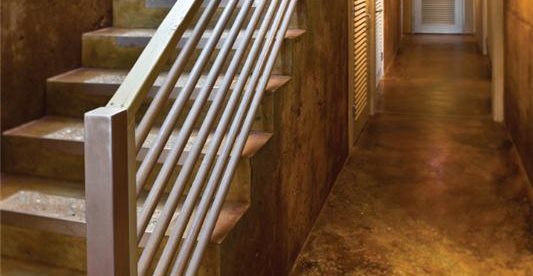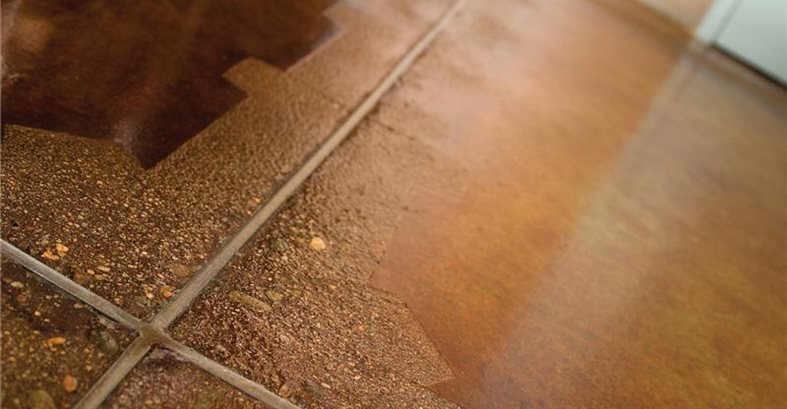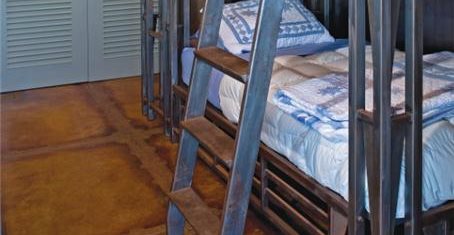The challenge
Sometimes contractors are given a challenge beyond their wildest dreams. That was the case for Tom Ralston of Tom Ralston Concrete. His talents were put to the test recently when architect Dennis Briton of Carmel asked for Ralston's help on a home nestled into a cliff side on Pleasure Point Beach in Santa Cruz.
Design goals
The architect wanted the concrete floors and walls of the home to look as if they had been worn and weathered by the ocean waves. The goal was to achieve harmony with the coastal environment, in which the home becomes one with the ocean. For the poured concrete walls, "we wanted to recreate the cliffs below and around, giving them fissures, cracks and veins," says Ralston.
Secrets to success
-
To replicate the veined look of an ocean-washed seashore in the floors, Ralston employed multiple colors of acid stains along with embedded accents of beach glass, aquarium sand, and seashells.
-
A weathered, worn appearance was achieved by using a retardant to take away about 1/8 inch of the concrete surface. Ralston used a turkey baster to shoot out small random holes, or craters, in the concrete and then used an artist's brush to apply a dark acid stain in the holes.
-
The technique used to create the walls was to randomly pour the concrete into the forms and then lightly vibrate them in order to retain some of the bug holes and air pockets. "While we were waiting for the concrete to set up, we also sprinkled on rock glass so that when the forms were pulled, we had successfully created the fissures," says Ralston.
A 'wonderful medium'
For this project, concrete not only enabled the homeowner to bring the ocean indoors, it also contrasted beautifully with the other materials used in the home. "The architect loves concrete and all that it can be used for," says Ralston. "He thought that with the other elements that were going to be used in the house, like polished imported glass tiles, stainless steel railings, stainless steel stair noses, and smooth green glass used as a partition, that the treated concrete would make a wonderful medium. We showed the architect and designer examples of unusual and unique concrete treatments that we thought would bring the ocean and surrounds into the house."
Contractor
Tom Ralston Concrete, Santa Cruz, Calif.
Related article
Tom Ralston Is Making Waves
Submit Your Own Project Photos
See more water inspired concrete floors






